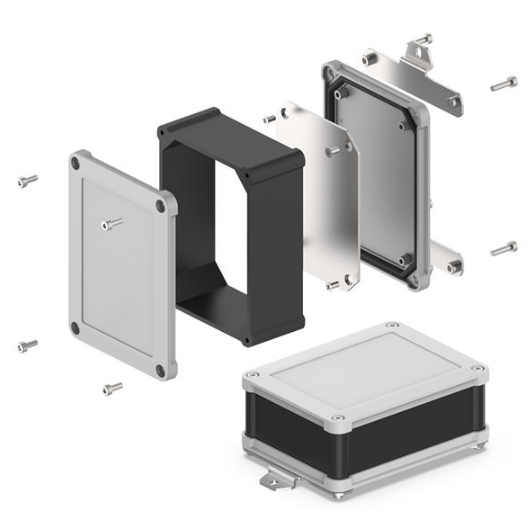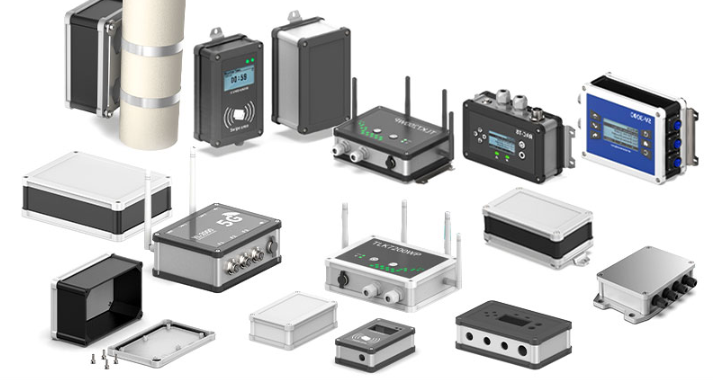Implementing 5G technology demands meticulous planning and precision in selecting the right components. One crucial aspect is the enclosure, which is pivotal in safeguarding the infrastructure.
Choosing the most suitable enclosure for 5G networks is paramount for seamless operations and optimal performance.
Choosing the most suitable enclosure for 5G networks is paramount for seamless operations and optimal performance.
What is the Importance of the Enclosure in 5G?
Enclosures are the unsung heroes of 5G infrastructure, providing crucial protection and support to the network's sensitive and vital components. Here's a more detailed exploration of their importance:
Safeguarding Sensitive Equipment
Within a 5G network, various critical components like base stations, antennas, routers, and power supplies are deployed in diverse environments—ranging from urban areas to remote locations.
Enclosures shield these components from harsh weather conditions, extreme temperatures, moisture, dust, and physical damage. They act as the first line of defense, ensuring that sensitive electronics remain operational and undamaged.
Enclosures shield these components from harsh weather conditions, extreme temperatures, moisture, dust, and physical damage. They act as the first line of defense, ensuring that sensitive electronics remain operational and undamaged.
Ensuring Network Reliability
The reliability of a 5G network heavily relies on the continuous and faultless operation of its components. Enclosures contribute significantly to the overall reliability by protecting against environmental factors that could otherwise cause equipment malfunction or failure.
By mitigating the impact of external elements, enclosures help maintain consistent network performance and minimize downtime.
By mitigating the impact of external elements, enclosures help maintain consistent network performance and minimize downtime.
Extending Equipment Lifespan
The investment in 5G infrastructure is substantial. Enclosures play a pivotal role in prolonging the lifespan of expensive and critical network equipment.
By shielding components from environmental stressors, enclosures help prevent premature wear and corrosion, ultimately reducing maintenance costs and enhancing the overall longevity of the network.
By shielding components from environmental stressors, enclosures help prevent premature wear and corrosion, ultimately reducing maintenance costs and enhancing the overall longevity of the network.

Adapting to Diverse Deployment Environments
5G networks are deployed in diverse environments, from urban landscapes to rural areas and industrial zones. Enclosures are designed to cater to these varying deployment scenarios.
They offer versatility, providing options for indoor, outdoor, pole-mounted, or wall-mounted installations, ensuring that regardless of the deployment environment, the network equipment remains protected and operational.
They offer versatility, providing options for indoor, outdoor, pole-mounted, or wall-mounted installations, ensuring that regardless of the deployment environment, the network equipment remains protected and operational.
Supporting Customization and Upgradability
Enclosures are not one-size-fits-all solutions. They are designed to accommodate the specific needs of various network components. Their modular nature allows for customization, enabling the integration of different-sized equipment and future upgrades without requiring complete overhauls.
This flexibility reduces deployment complexities and facilitates the evolution of the network as technology advances.
This flexibility reduces deployment complexities and facilitates the evolution of the network as technology advances.

Enhancing Security Measures
In addition to protecting against environmental factors, enclosures contribute significantly to network security. They incorporate features such as sturdy locks, access control systems, and tamper-proof designs to prevent unauthorized access, safeguarding sensitive equipment and data.
Factors to Consider When Selecting 5G Enclosures
When it comes to the selection of the enclosure for the 5G. You need to consider the following factors.
Environmental Conditions
Environmental factors play a critical role in determining the lifespan and effectiveness of 5G equipment. Extreme temperatures, high humidity, dust, and even exposure to elements like saltwater or pollutants can compromise hardware integrity. Enclosures must be selected based on the specific environmental challenges faced by the deployment location.
For instance, in coastal areas or regions with high humidity, corrosion-resistant enclosures are essential. Similarly, in areas prone to temperature fluctuations, enclosures with proper insulation and cooling mechanisms are crucial to prevent overheating.
For instance, in coastal areas or regions with high humidity, corrosion-resistant enclosures are essential. Similarly, in areas prone to temperature fluctuations, enclosures with proper insulation and cooling mechanisms are crucial to prevent overheating.
Size and Scalability
The rapid evolution of technology demands enclosures that can adapt to changing needs. A crucial consideration is selecting enclosures that offer ample space for current equipment while allowing for easy scalability without requiring a complete overhaul.
Modular enclosures, adjustable racks, and cabinets that can accommodate additional hardware or larger components without major structural changes are highly advantageous. This scalability ensures that the infrastructure can evolve alongside the growing demands of 5G technology.
Modular enclosures, adjustable racks, and cabinets that can accommodate additional hardware or larger components without major structural changes are highly advantageous. This scalability ensures that the infrastructure can evolve alongside the growing demands of 5G technology.
Material and Construction
The choice of enclosure material significantly impacts its durability and performance. Aluminum is lightweight and offers good corrosion resistance, making it suitable for many outdoor deployments. Stainless steel provides superior strength and durability, ideal for harsh environments or where vandalism is a concern.
Polycarbonate, while lighter, offers excellent impact resistance but may not be as suitable for extreme weather conditions. Considering the weight, ease of installation, and long-term maintenance needs is crucial when selecting the appropriate material for the enclosure.
Polycarbonate, while lighter, offers excellent impact resistance but may not be as suitable for extreme weather conditions. Considering the weight, ease of installation, and long-term maintenance needs is crucial when selecting the appropriate material for the enclosure.
Customization Options
5G networks often involve a diverse range of equipment, from antenna arrays to power supplies, each with its specific requirements. Enclosures need to accommodate these diverse components effectively.
Modular or customizable enclosures, featuring adjustable shelves, brackets, or mounting options, offer the flexibility needed to fit different hardware configurations. Additionally, considering future upgrades or changes in technology standards ensures that the enclosures can adapt without requiring complete replacements, saving time and resources.
Modular or customizable enclosures, featuring adjustable shelves, brackets, or mounting options, offer the flexibility needed to fit different hardware configurations. Additionally, considering future upgrades or changes in technology standards ensures that the enclosures can adapt without requiring complete replacements, saving time and resources.
Security Features
Securing 5G infrastructure is paramount to prevent unauthorized access, tampering, or theft, which could compromise network integrity.
Enclosures should incorporate robust locking mechanisms, access control systems, and intrusion detection features. Biometric scanners, tamper-proof seals, and encrypted access protocols add layers of security. Additionally, physical reinforcement and rugged designs can deter vandalism and unauthorized entry attempts, ensuring the network's continuity and reliability.
Enclosures should incorporate robust locking mechanisms, access control systems, and intrusion detection features. Biometric scanners, tamper-proof seals, and encrypted access protocols add layers of security. Additionally, physical reinforcement and rugged designs can deter vandalism and unauthorized entry attempts, ensuring the network's continuity and reliability.
Conclusion
All in all, enclosures form the backbone of a robust and reliable 5G infrastructure. Their role in protecting, supporting, and ensuring the uninterrupted performance of network components is indispensable. As 5G technology continues to evolve, selecting the right enclosures becomes increasingly critical to guarantee the network's efficiency, durability, and security.



